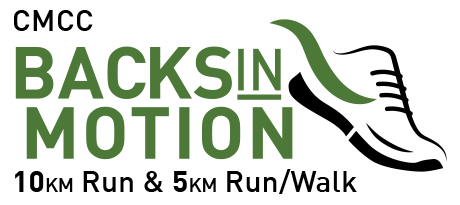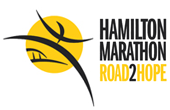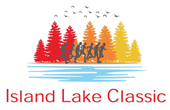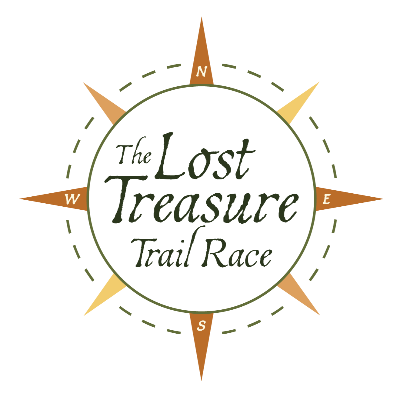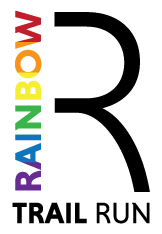Event:
Giants Rib Raid – 2013
Host Site:
Rocky Ridge Ranch
The Giants Rib Raid Adventure Race is one of three races in the Don’t Get Lost adventure running series. The other two being the ‘Raid the Hammer’ (held in the Fall) and the ‘Snowshoe Raid’ (held in January).
The Don’t Get Lost adventure series in my experience is one geared a little more to the beginner, or at least less extreme enthusiast. It features trekking courses only, no canoeing or mountain biking necessary, which tends to draw in a more moderate crowd (again, in my experience). Which isn’t to say that the more advanced teams aren’t out there as well, team Wilderness Traverse won this years Full-Raid event in 3 hours flat!
The race itself had to be rescheduled this year due to the ice storm encountered in the Guelph/Milton/Rockwood region, and the ensuing high water levels and loss of power at the host site. Originally schedule for April 13th and moved to April 21st. The late call to change the race date caused a lot of teams to drop out of the race, or defer their registration to the fall event later this year. The result was a smaller than usual field of teams with only 42 teams taking to the course.
On to the race, my team competed in the Half-Raid and we lined up for the 10:15AM race start. Off we went with the pack down the dirt road of the host site before picking our bearing to CP1. A small stream, although with a steady flow of water given the recent thaw and precipitation gave us our first chance to get wet. The water was ice cold, but away we went still in with a large group of teams to find CP1 with no hesitation. From there it was a simple matter of hitting our bearing and traversing another 400 meters of terrain to CP2, located on a small hill surrounded by soggy marsh. Again, the water was ice cold. 200M from there with hit ‘6th Line Nassagaweya’ to join up with a well marked trail. This trail took us directly east (approx 1.5km) to ‘Nassagaweya-Esquesing Townline’, this was easy running and we made good time.
Approx 4km into the race and we had our first real decision to make. Follow a bearing to CP3 through the bush or follow a trail around the south side of a lake, join up with another trail to take us north to the CP. We chose the trails as the bush was very thick at that point, and we decided the extra distance was worth the energy. CP3 was described as being at the northern tip of a marsh. This was all well and good, but the high water levels had created rather more marshes in the real world than shown on the map, this ‘new water’ if you will, gave us a little bit of trouble but after a few scouting expeditions we found the correct marsh.
From this point we had another decision to make, head south on the trail we had come in on and meet up with a fence line (out of bounds marker) to follow it east to another set of trails and onto CP4, or straight through the bush? We decided the trails weaved rather too much, and went for the straight line approach instead. We knew we had about 2km to cover before arriving at CP4 and were able to follow our bearing almost perfectly, using the only significant contours on the map to confirm our location as we went. One way or another everyone had to funnel their way through the only land bridge between two large bodies of water to get to CP4, fortunately we navigated our way straight to it. A quick jog south and we had CP4.
Now approx 7km into the race and the trails in this section were not a realistic option, they were well off to the east, as such it was bushwhacking time. We picked our bearing and started south to CP5, which would have been smooth going according to the map, but as stated before, there was a
CP6 was due south but required us to split two large bodies of water. We made sure not to enter or cross either body of water due to their marking on the map with a solid black outline, and went for the only ‘dry’ area in between them. This turned out to be knee deep marsh, again, not noted on the map as wetland. No matter, off to CP6 without a problem, now approx 8km into the race.
From CP6 we had to head back north a short jog to get around the ‘lake’ before turning west and heading back to Nassagaweya-Esquesing Townline. We picked our bearing and straight lined it through a mixture of bog, wetland and open fields. We covered approx 1.5km and made it to the road no more than 50M off target, which was a gated entrance to a marked trail. This trail took us between two very large quarries and west to 6th Line Nassagaweya and CP7. Now approx 11km into the race and we have managed to hit each CP almost dead on (small exception with CP3, but only minor).
Initially we had planned on going straight from CP7 to CP8 using a bearing, which we knew would take us through a marsh. At the pre-race briefing it was duly noted that this marsh was currently very deep, and probably almost neck high. We decided against going for a swim in such freezing water and instead chose the more comfortable option of heading south on 6th Line Nassagaweya maybe 300M to join up with a well defined trail system. We followed this trail west about 2km before choosing our jumping in point to find CP8. Again, we hit this almost exactly and walked on CP8 without any issues. Now 13km into the race and everything has gone almost perfectly… I am tempted to end the report here, or just provide a quick “yada-yada-yada, and we crossed the finish line” to wrap it up, but that wouldn’t be 100% transparent of me would it?
Ok, here we go… CP9 and CP10 were in a section of the race called the “Controlled Blast” section which featured its own 1:5,000 scale map. This section of the race was filled with dummy flags, and when I say filled with… I mean absolutely covered with dummy flags. All the flags had manual punches instead of the SI Chip boxes. The trick was to find the right flags… From CP8 we picked our bearing and headed approx 1.5km to where I thought CP9 would be. We passed dozens of flags on the way, finding ourselves at a 3-way trail intersection. This correlated with the map perfectly, and I was so sure we had the right spot, and what did we find at the intersection? Three flags at each point on the intersection, all of them no more than 10 feet from one another. The map, although a small scale, did not identify anything resembling which point of the intersection would or might be the correct flag. We took an educated guess and picked the flag at the most northern tip of the intersection. It’s difficult as a navigator to move through the bush on bearing almost perfectly for 1.5km, to get your team to the correct spot on a map and be presented with essentially a guessing game of three flags within 10 feet of one another. But, that was the task and we made our choice.
From their we followed trails to CP10, we had a little more trouble finding this spot due to the maze of small trails, but again we were presented with a multitude of flags within a 10 foot radius, we made our best guess and moved on to CP11, directly north along a trail. CP11 had a crew who checked your manual punches for CP9 and CP10, if you were correct you moved directly to the finish line from there. If you were incorrect, you had to complete two additional CP’s (XX and YY). We had guessed incorrectly on both of our CP9 and CP10 choices, and as such we headed off to CPXX, no more than 250M across a field and then due east through some more water to CPYY atop of a hill. These penalty CP’s cost us probably an additional 1.5km’s. From there it was straight to the finish line. Our total distance covered was probably somewhere in the 16-17km range.
Overall this was a very enjoyable race. The freezing cold water was something new for me as I’ve never completed a race this early in the season before, and certainly not one with ice crusted marshes. The race was very well organised.
My only frustration was the “controlled blast” section. The concept is great, and I think could have been implemented better. Having dummy flags in the bush is a great idea, and really tests your ability and confidence in your decisions and navigation. Having so many clusters of flags in incredibly close proximity and directly upon the intersection of a marked CP is however a little frustrating. My confidence level for CP9, that we were at the correct intersection was very high, the contours and identifiers correlated perfectly with the map, as such, having your work turn into a guessing game is frustrating. CP10, I am not as confident we were at the correct spot on the map, so I don’t begrudge that one. The possibility exists that we were not even at the correct location on the map for CP9, and I am aware of that, although my gut tells me we fell victim to a guessing game. But I wouldn’t want this one frustration to take away from the overall feeling that this was a great race, well organised, and a wonderful way to start my season. I wouldn’t hesitate to sign up for another Don’t Get Lost adventure running series event.





